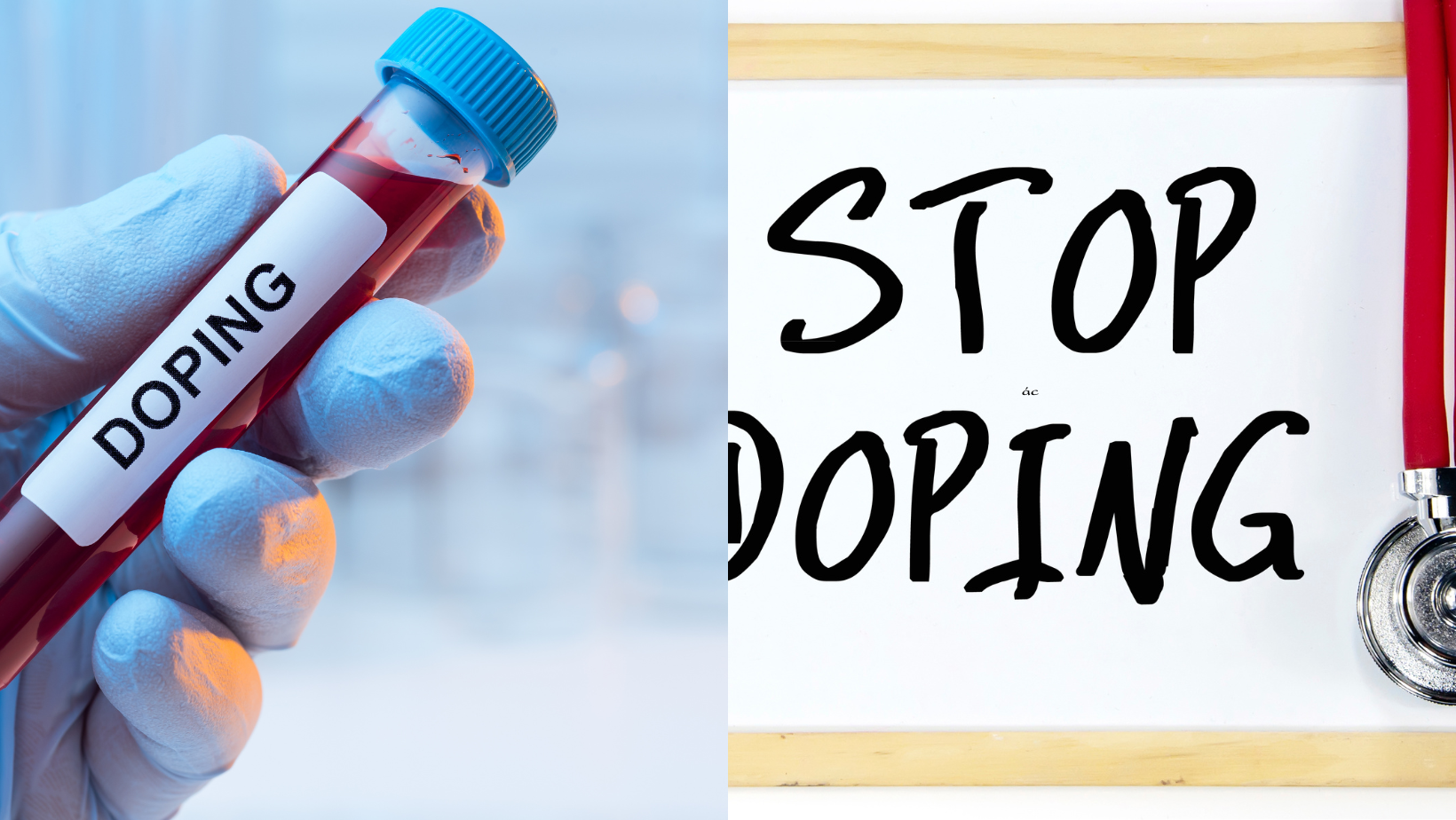Doping, also known as performance-enhancing drug use, has been a hot topic in the world of sports for decades. From Lance Armstrong’s infamous confession to the ongoing controversy surrounding Russian athletes, doping has been a constant issue that plagues the integrity of sports. While some may argue that the use of drugs can improve an athlete’s performance, it is ultimately illegal and unethical.
In this article, we will explore the history of doping, its impact on athletes and the sporting world, and the measures being taken to combat this issue. We will delve into the reasons behind doping, the most commonly used substances, and the consequences faced by those who are caught. Let us dive deeper into the world of doping and understand its complexities.
The History of Doping: How It All Began
Doping is not a new phenomenon in the world of sports. In fact, its roots can be traced back to ancient civilizations where athletes would use various substances to enhance their performance. For example, in ancient Greece, athletes would consume hallucinogenic mushrooms and ingest raw animal testicles, believing it would give them an advantage in competitions.
However, the modern era of doping began in the 19th century when athletes started using stimulants such as caffeine and cocaine to improve their endurance and performance. The first recorded instance of doping in sports was in 1886 when a cyclist died after consuming trimethyl, a stimulant that increased his heart rate and caused cardiac arrest. This tragic event led to the banning of stimulants in cycling competitions.
The use of performance-enhancing drugs continued to grow throughout the 20th century, with the introduction of steroids in the 1930s. These substances were initially developed for medicinal purposes but were soon discovered to have anabolic effects on the body, leading to muscle growth and improved performance. The 1950s saw the rise of amphetamines, which were widely used by athletes to improve their focus and endurance.

Indeed, its origins can be traced back to ancient civilizations, where athletes utilized different substances to improve their performance
In the 1960s, a new form of doping emerged – blood doping. This involved extracting blood from an athlete, storing it, and then re-injecting it back into the body before competition, resulting in an increase in red blood cell count and oxygen-carrying capacity. Blood doping was popular among cyclists and long-distance runners but was eventually banned in the early 1980s.
The 1980s also saw the rise of the infamous East German sports programs that involved systematic doping of their athletes with steroids. This led to numerous medals being won by East German athletes but also resulted in long-term health consequences for many of them. As a result, the World Anti-Doping Agency (WADA) was formed in 1999 to combat doping in sports.
Reasons Behind Doping: Understanding the Motives
There are various reasons why athletes choose to use performance-enhancing drugs. These motives can range from personal gain to external pressures. Let us explore some of the most common reasons behind doping.
Pressure to Win
One of the primary reasons behind doping is the immense pressure to win. In today’s highly competitive sporting world, athletes are constantly under pressure to perform and bring home medals for their country. This pressure can come from coaches, sponsors, and sometimes even family and friends. As a result, athletes may resort to doping to gain an unfair advantage over their competitors and secure a win.
Financial Gains
For many professional athletes, their career depends on their performance and success in competitions. Winning medals can lead to lucrative sponsorships, endorsements, and prize money. In such a high-stakes environment, some athletes may feel compelled to use performance-enhancing drugs to improve their chances of winning and securing financial stability.
Lack of Education
Many athletes may not fully understand the effects and consequences of doping. They may believe that using performance-enhancing drugs will give them a short-term advantage without considering the long-term health risks. In some cases, athletes may also be misinformed by coaches or trainers who encourage or facilitate the use of these substances.
Body Image Pressures
In sports where muscular strength and physique are crucial, such as bodybuilding or weightlifting, the pressure to have the perfect body can lead some athletes to use steroids and other banned substances. The desire to conform to societal standards of beauty and achieve a certain body type can result in an unhealthy obsession with doping.
Most Commonly Used Substances in Doping
The list of performance-enhancing drugs is extensive and constantly evolving. However, some substances are more commonly used than others. Let us take a closer look at the most frequently used substances in doping.

The catalogue of performance-enhancing drugs is extensive and continually changing
Steroids
Anabolic-androgenic steroids (AAS) are synthetic variations of the male hormone testosterone. These substances are used to increase muscle mass, strength, and endurance. Athletes who use steroids may experience increased aggression, accelerated muscle growth, and improved recovery time. Some popular steroids used in doping include testosterone, nandrolone, and stanozolol.
Erythropoietin (EPO)
EPO is a hormone naturally produced by the kidneys to stimulate the production of red blood cells. It is commonly used in endurance sports such as cycling and long-distance running. By increasing the production of red blood cells, EPO can improve an athlete’s oxygen-carrying capacity and enhance their endurance.
Stimulants
Stimulants are substances that act on the central nervous system to increase alertness, energy, and performance. Some commonly used stimulants in sports include caffeine, amphetamines, and cocaine. These substances can provide athletes with a temporary boost in energy and focus, but they also come with several side effects such as increased heart rate, anxiety, and insomnia.
Human Growth Hormone (HGH)
Human growth hormone is a hormone naturally produced by the body to stimulate growth and cell reproduction. It is used in sports to increase lean muscle mass, improve recovery time, and reduce body fat. HGH is commonly used in sports that require strength and power, such as weightlifting and football.
The Impact of Doping on Athletes
While some may argue that doping can improve an athlete’s performance, it is not without consequences. The use of performance-enhancing drugs can have severe short-term and long-term effects on an athlete’s health and well-being.

The consumption of performance-enhancing drugs can cause significant immediate and long-term impacts on the health and overall well-being of athletes
Short-Term Effects
The immediate effects of doping can vary depending on the substance used. However, some common short-term effects include:
- Mood swings and aggressive behavior
- Acne and skin problems
- Increased blood pressure and heart rate
- Insomnia and sleep disturbances
- Nausea and vomiting
- Liver and kidney damage
In some cases, these short-term effects may result in disqualification from competitions and loss of reputation.
Long-Term Effects
The long-term effects of doping can be even more detrimental to an athlete’s health. Some of the potential consequences include:
- Cardiovascular diseases such as heart attacks and strokes
- Liver and kidney failure
- Infertility and sexual dysfunction
- Development of tumors and cancer
- Mental health issues such as depression and anxiety
- Damage to the reproductive system and birth defects in offspring
Moreover, the use of performance-enhancing drugs can also lead to addiction and withdrawal symptoms if an athlete tries to stop using them.
Measures Taken to Combat Doping
The fight against doping in sports is ongoing and requires constant vigilance and stricter measures to be effective. In recent years, several measures have been implemented to detect and prevent doping.
Drug Testing
Drug testing is a crucial tool used by organizations such as WADA and the International Olympic Committee (IOC) to detect the use of performance-enhancing drugs. Athletes are required to provide urine or blood samples that are then analyzed for banned substances. Random drug tests are carried out before, during, and after competitions to ensure fair play.
Education Programs
As mentioned earlier, lack of education is one of the reasons why athletes resort to doping. To combat this issue, various educational programs have been implemented to educate athletes, coaches, and support staff about the dangers of doping. These programs aim to create awareness and promote ethical behavior in sports.
Sanctions and Penalties
Athletes who are caught using performance-enhancing drugs face severe consequences. These penalties can range from disqualification from competitions to lifetime bans from their sport. In some cases, athletes may also face legal implications and damage to their reputation.
Technology and Innovation
Advancements in technology and innovation have also played a crucial role in detecting doping in athletes. New methods of testing, such as the biological passport, have been introduced to monitor changes in an athlete’s body over time. This helps identify any abnormal fluctuations that may indicate the use of performance-enhancing drugs.
The Controversy Surrounding Doping: A Global Issue
Doping is a global issue that affects all sports, regardless of their popularity or level of competition. Despite efforts to eradicate doping, new cases are constantly surfacing, casting a shadow of doubt on the achievements of athletes and the integrity of sports.
Russian Doping Scandal
One of the most high-profile doping scandals in recent years has been the Russian doping scandal. In 2016, a report by WADA revealed evidence of widespread doping among Russian athletes at the 2014 Winter Olympics in Sochi. This led to the suspension of several Russian athletes and a ban on Russia from competing at the 2018 Winter Olympics.
The Case of Lance Armstrong
Cycling legend Lance Armstrong’s admission of using performance-enhancing drugs during his career sent shockwaves throughout the sporting world. Armstrong, who had previously denied any wrongdoing, confessed to using a variety of performance-enhancing drugs to improve his cycling performance. This resulted in the stripping of his seven Tour de France titles and a lifetime ban from competitive cycling.
Doping in Esports
While doping has traditionally been associated with physical sports, it is now making its way into the world of esports. Professional gamers are also facing pressure to win and may resort to using substances such as Adderall to improve their focus and reaction time. This has led to calls for drug testing in the esports industry to maintain fair competition.
Conclusion
Doping is a complex issue that has plagued the world of sports for decades. As we have seen, it not only affects the integrity of sports but also poses significant health risks to athletes. While measures are being taken to combat this issue, it is up to athletes, coaches, and governing bodies to uphold the values of fair play and clean sportsmanship.
In the words of former Olympic sprinter Carl Lewis, “The greatest competitor is me. I am not a role model; I am an athlete. It’s all about breaking records and competing against myself.” Let us remember that in the end, it is an athlete’s determination, hard work, and dedication that truly brings glory to the sport, not the use of performance-enhancing drugs.








